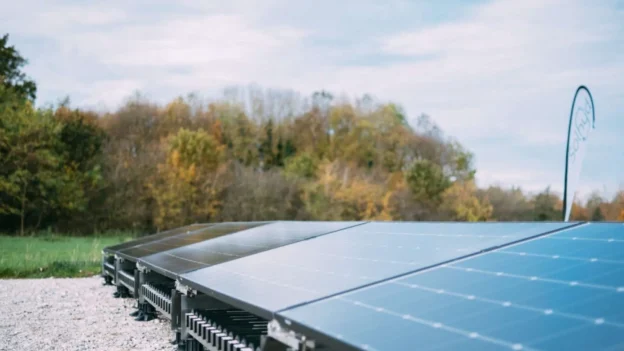An alliance between four European companies will mark a turning point in the energy transition. Solhyd, Ether Energy, SunBuild and Nippon Gases have initiated the development of the world’s first hydrogen solar park, which will be operational in 2026 in Wallonia, Belgium.
Hydrogen solar farm technology
The project is based on innovative technology developed by Solhyd at KU Leuven University, capable of generating hydrogen directly from sunlight and air, without requiring liquid water or connection to the grid. The system uses 50 kW modules integrated into a solar plant of approximately 2 MWp, accompanied by batteries for energy storage.
The initiative brings together key players in each link of the process: Ether Energy leads the development and operation of the park; SunBuild undertakes the engineering and construction of the solar installations; Solhyd provides the hydrogen generation technology; and Nippon Gases manages the storage and distribution of the green gas to industrial users.
With this approach, a replicable model is established that allows solar parks in Europe to add green hydrogen production to their portfolio, mitigating the effects of negative electricity prices and maximizing energy efficiency.
The backing of Nippon Gases validates the industrial potential of the project. Its experience in supplying gases to strategic sectors such as food, chemicals and electronics will allow frictionless integration of green hydrogen into existing markets. This collaboration anticipates a growing use of hydrogen in thermal processes and high-precision technologies such as chip manufacturing.
Winner of the World Hydrogen Award, Solhyd has developed a modular solution that does not rely on electrical infrastructure or scarce materials. The system is designed to be easy to install, cost-effective and adaptable to various sunny regions, making it an ideal platform for future expansion.
The pilot plant will operate for at least five years, with a jump to 2 MW planned for 2028. From there, the consortium plans to scale up its model on a continental level and in regions with high solar resources. This new type of hybrid farm – combining electricity and green hydrogen – represents a key tool for reducing grid congestion and offering a dual energy source.
Source and photo: Solhyd

